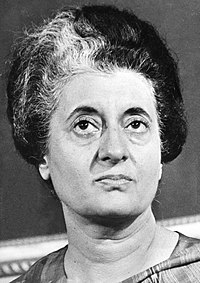
Photo from wikipedia
This essay considers the role of media in a major instance of populist mobilization in post-Independence India: resistance to the internal Emergency of 1975–1977. It engages with sender–message–receiver models of… Click to show full abstract
This essay considers the role of media in a major instance of populist mobilization in post-Independence India: resistance to the internal Emergency of 1975–1977. It engages with sender–message–receiver models of communication by looking at how news of an event in Bangladesh, the assassination of President Sheikh Mujibur Rahman (1920–1975), was disseminated via radio broadcasts and written about in the prison writings of two political leaders arrested in connection with the Emergency in India: Jayaprakash Narayan (1902–1979), leader of the anti-Congress movement for Total Revolution, and L. K. Advani (1927–), Jana Sangh and later Bharatiya Janata Party politician. News of Mujib’s murder was initially censored in India, occurring as it did at the inopportune moment of Indian Independence Day, when Indira Gandhi was due to make her first public address since the proclamation of emergency. But attempts to withhold news of the killing were rendered futile by unimpeded foreign radio broadcasts. In describing how prison writers refuse official accounts of this event, I outline a particular type of media satyagraha (truth force or non-violent resistance): knowledge created through the spatiotemporal disordering induced by technical mediation rather than the linear model of state censorship, and made possible by the very media formats criticized by Gandhi for having “macadamized” the human mind.
Journal Title: Interventions
Year Published: 2019
Link to full text (if available)
Share on Social Media: Sign Up to like & get
recommendations!